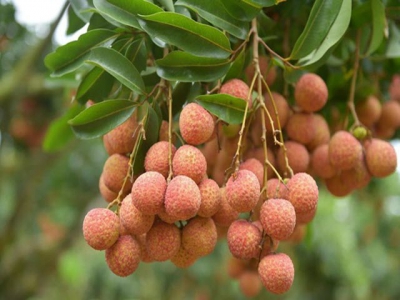Luc Ngan lychee of Bac Giang province granted geographical indication protection in Japan

Bac Giang – Thieu lychee grown in Luc Ngan district in the northern province of Bac Giang has been granted a certificate of geographical indication from the Ministry of Agriculture, Forestry and Fisheries of Japan (MAFF), according to Chairman of the provincial People’s Committee Le Anh Duong.
Thieu lychee has been already granted geographical protection in six countries - China, Laos, Cambodia, the Republic of Korea, Singapore, and Australia. The product has been exported to many countries worldwide.
MAFF’s certification of geographical indication for Thieu lychees proves that the quality of the product meets international standards, especially a "difficult" market like Japan, Duong said.
The certification is expected to facilitate the export of Thieu lychee to Japan and help the locality to expand export to other markets, he added.
Director of the provincial Department of Cultivation Dang Van Tang said for the Japanese market, Bac Giang continues to grow Thieu lychees in 19 cultivation areas which were granted codes in 2020.
The locality has proposed to grant codes to 11 more planting areas, lifting the total area of Thieu lychee serving export to Japan to about 219 ha, with output of around 1,500 tonnes.
Chairman of the Luc Ngan district People’s Committee La Van Nam said Luc Ngan has over 15,000 ha of land under Thieu lychee, mostly in Hong Giang, Tan Son, Quy Son, and Giap Son communes. Many cultivation areas are applying the Global Good Agricultural Practices (GlobalGAP) and Vietnamese Good Agricultural Practices (VietGAP), meeting requirements for domestic consumption and export.
According to the provincial Department of Industry and Trade, Bac Giang exported 200 tonnes of Thieu lychee to Japan in 2020.
The province expects to produce about 160,000 tonnes of the fruit in 2021.
Thieu lychees have been exported to 30 countries such as China and the EU, Russia, the US and Canada.
Lychee is the fourth fruit from Vietnam that has successfully made inroad into the Japanese market, following dragon fruit, mango and banana.
Luc Ngan boasts favourable climate and soil conditions for the cultivation of various fruits. Apart from lychee that it has long been famous for, many other fruits of the district have also won over preference from both domestic and foreign consumers. Fruit cultivation and associated services earn Luc Ngan trillions of VND every year.
The district is currently home to about 28,000ha under fruit trees. That includes nearly 15,300ha of lychee (with over 12,000ha following VietGAP and GlobalGAP standards) that generates about 90,000 – 130,000 tonnes of fruit annually, and 7,000ha of citrus trees with an annual output 50,000 – 60,000 tonnes.
Many local farmers have enjoyed better living standards thanks to horticulture, which has helped raise the average per capita income in Luc Ngan to 95 million VND (over 4,120 USD) in 2020.
Over the last four years, the Ministry of Agriculture and Rural Development (MARD) has worked with Japan’s Ministry of Agriculture, Forestry and Fisheries (MAFF) to conduct testing and negotiations to pave the way for lychee exports.
MAFF finally agreed to import lychee from Vietnam last year.
Japanese experts went to Bac Giang’s Luc Ngan district early on and were satisfied with the lychee growing areas granted with export standard codes. They still had to directly supervise the process of harvesting, preserving, and packaging of lychee to be exported to Japan, however.
Exports must be packed and treated with methyl bromide fumigation at facilities approved by the Plant Protection Department and MAFF, with a minimum dosage of 32g per cu. m. for two hours, under the supervision of Vietnamese and Japanese plant quarantine officers.
Có thể bạn quan tâm
 Lục Ngạn lychee granted GI certificate in Japan
Lục Ngạn lychee granted GI certificate in Japan The Japanese Ministry of Agriculture, Forestry and Fisheries (MAFF) has granted a Geographical Indication (GI) certificate to lychees grown
 Vietnamese mangoes imported into US grow up
Vietnamese mangoes imported into US grow up Vietnam emerging as the 14th largest supplier of mangoes to the United States in 2020, the import of Vietnamese mangoes into the US is expected to continue
 Bac Giang - VietGap lychee cultivation area increases
Bac Giang - VietGap lychee cultivation area increases As this year lychees exported to Japan are cultivated up to VietGAP standard, the GlobalGAP lychee farming area is stable as compared to the previous year